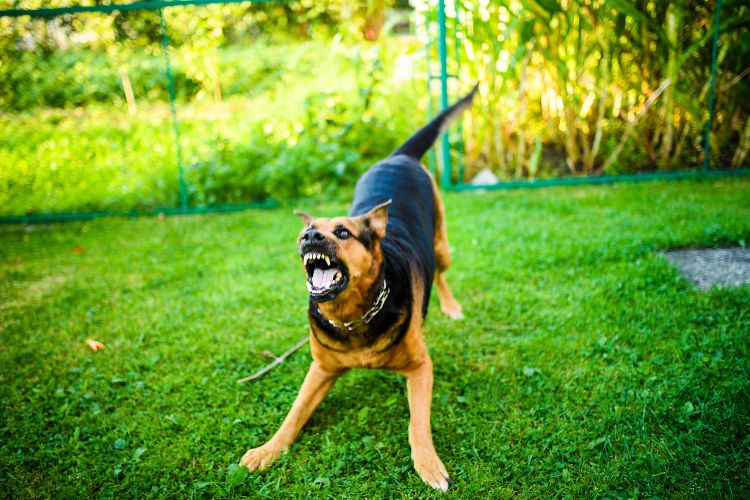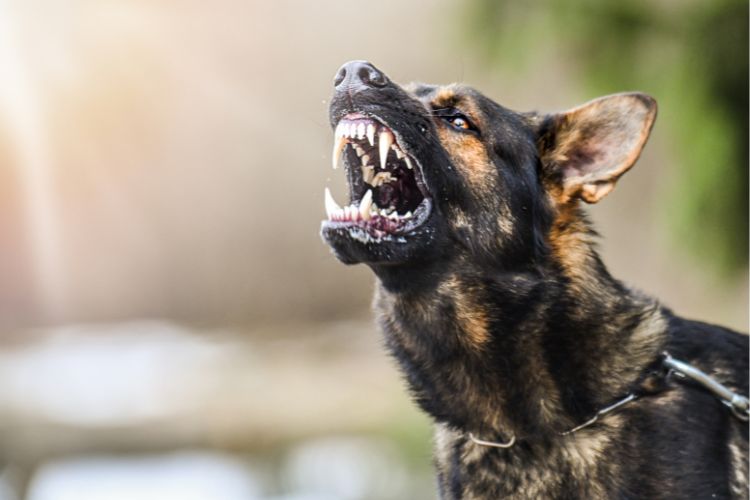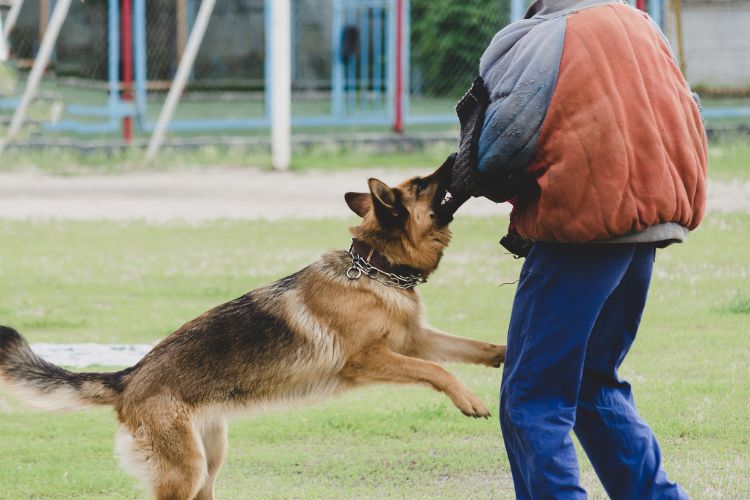The bond between humans and dogs is undeniably strong. These loyal companions bring joy and warmth to our lives, often being considered as members of our families. However, despite this special relationship, it is essential to remember that dogs are still animals with instincts that can, at times, lead to aggressive behavior. As unsettling as it might be, the reality of potential dog attacks necessitates an understanding of survival strategies to minimize harm and ensure safety.
Dog attack survival is a concept that encompasses the knowledge and techniques employed to prevent, de-escalate, and manage situations where a dog exhibits aggressive behavior with the intent to harm. This includes an understanding of canine body language, awareness of potential triggers for aggressive behavior, and practical strategies for defending oneself during an attack.
The importance of understanding dog attack survival cannot be overstated. In the face of an attack, the right knowledge and skills can mean the difference between severe injury or a controlled situation. It equips individuals with the confidence and competence needed to navigate potentially dangerous encounters, and most importantly, it can save lives.
Statistics and Risks Associated with Dog Attacks in the US
Dog attacks in the United States are more common than one might expect. The Centers for Disease Control and Prevention (CDC) report that nearly 4.5 million dog bites occur each year. Of these, about 800,000 require medical attention. Tragically, a number of these incidents result in fatalities.
The risks associated with dog attacks are high. Physical injuries can range from minor cuts and scrapes to serious wounds that may require surgery or lead to permanent damage. Emotional trauma is another significant risk, with many victims experiencing anxiety, fear, and even post-traumatic stress disorder (PTSD) following an attack.
Certain groups are more vulnerable to dog attacks, particularly children and the elderly. Children are often at eye level with dogs and may not yet have learned how to interact safely with them, making them a more likely target. Similarly, elderly individuals may be less capable of defending themselves or escaping from an aggressive dog due to limited mobility or physical strength.
These statistics underscore the importance of understanding dog attack survival. By equipping ourselves and others with the necessary knowledge and skills, we can reduce these numbers and make our communities safer for everyone.

Understanding Dog Behavior and Reducing the Risk of Attack
Comprehending dog behavior is pivotal to mitigating the risk of an attack. Dogs communicate their emotions through body language and vocalization, so knowing what to look for can provide key insights into their emotional state. Understanding these signals helps to interpret whether a dog may feel threatened, anxious, or aggressive and aids in preventing adverse interactions.
Recognizing Signs of Aggression and Stress in Dogs
It’s crucial to recognize the signs of stress and aggression in dogs. Common signs include:
- Growling or barking aggressively
- Showing teeth
- Erect ears and stiff tail
- Raised hair on the back (hackles)
- Staring intently without breaking eye contact
- Body stiffening
Recognizing these signs and respecting a dog’s emotional state can prevent potential incidents and help ensure both your safety and the dog’s wellbeing.
Safety Measures to Avoid Dog Attacks
The best approach to avoid dog attacks is prevention. This includes:
- Approaching Unfamiliar Dogs Cautiously: Never rush towards an unfamiliar dog. Always ask the owner’s permission before petting a dog, approach slowly, and allow the dog to sniff your hand before attempting to touch it. A rushed or sudden approach could startle the dog and trigger an aggressive response.
- Respecting a Dog’s Personal Space and Boundaries: Just like humans, dogs appreciate personal space. Avoid approaching a dog while it’s eating, sleeping, or caring for puppies. Invading a dog’s personal space can trigger defensive behavior.
- Avoiding Interaction with Dogs Exhibiting Aggressive or Fearful Behavior: If a dog exhibits signs of aggression or fear, it’s best to avoid interacting with them. Back away slowly, avoiding direct eye contact, which can be perceived as a threat by dogs.
- Teaching Children How to Properly Approach and Interact with Dogs: Children often act impulsively, which can lead to harmful interactions with dogs. Teach them not to approach unfamiliar dogs without an adult, to always ask the owner’s permission before petting a dog, and to avoid sudden movements or loud noises around dogs.
- Being Aware of Leash Laws and Following Local Regulations: Understanding and adhering to local leash laws can prevent many dog attacks. Leash laws are designed to keep both dogs and people safe by preventing dogs from roaming freely in public spaces. Ensure that your dog is properly leashed when outside, especially in crowded or unfamiliar environments.

Reacting During a Dog Attack
No one ever wishes to experience a dog attack, but knowing how to react can be crucial in minimizing harm and potentially saving your life.
- Stay Calm and Avoid Panic: The first rule during a dog attack is to stay calm and avoid panic. Dogs are very responsive to emotional energy and can sense fear or anxiety, which might escalate the situation. Staying calm not only helps you think more clearly but also sends a message to the dog that you are not a threat.
- Use Non-Threatening Body Language and Avoiding Sudden Movements: Try to adopt a non-threatening posture. Avoid direct eye contact, which dogs can interpret as a challenge. Stand sideways to the dog instead of facing it directly—this presents a narrower profile and is less threatening to the dog. Also, avoid sudden movements that could startle the dog and provoke an attack. Instead, move slowly and predictably.
- Protect Vulnerable Body Parts, Such as the Face and Neck: If an attack seems imminent, it’s crucial to protect your most vulnerable body parts. Use your arms and hands to shield your face and neck, which are the dog’s most likely targets. If possible, try to put an object like a jacket or a purse between you and the dog.
- Defend Yourself Using Available Objects as Barriers or Shields: Use anything you have to create a barrier between yourself and the dog. A bag, jacket, bicycle—anything that can serve as a shield can be used to deter the dog or absorb a bite. If you’re knocked over, curl into a ball, protect your face, and keep your hands over your ears and neck.
- Use Verbal Commands in a Firm, Assertive Tone: Often, a firm, loud, assertive voice can be enough to deter a dog. Use simple, forceful commands such as “No,” “Stop,” or “Back away.” Show assertiveness to let the dog know you’re not easy prey, but avoid shouting or screaming, as high-pitched sounds can further excite the dog.
Surviving a Dog Attack
Surviving a dog attack requires a combination of effective strategies and quick thinking to deter or neutralize the dog’s aggression, protect yourself, and seek immediate medical attention once the situation is under control.
- Strategies to Deter or Neutralize a Dog’s Aggression: Key strategies for surviving a dog attack involve posture, voice, and even the use of physical force in extreme cases.
- Standing Your Ground and Maintaining Eye Contact with the Dog: While this may seem counterintuitive, it’s important not to run away or turn your back on an aggressive dog, as this can trigger its chase instinct. Instead, stand your ground, stay motionless, and maintain indirect eye contact with the dog. Staring directly can be seen as a challenge, so try to look at the dog without making direct eye contact.
- Projecting Confidence and Authority Through Posture and Voice: Projecting confidence and authority can deter an attacking dog. Stand tall and assertive, and use a firm, commanding voice to tell the dog “No,” “Back off,” or “Stay.” Your confident demeanor can convince the dog that you are not a target.
- Offering an Item for the Dog to Bite Instead of Your Body: If you have something in your hand, like a bag or jacket, you can use it to redirect the dog’s bite. Offering an item for the dog to bite could protect your body from harm.
- Using Physical Force as a Last Resort to Protect Yourself: If an attack is inevitable, you may have to use physical force to protect yourself. Target sensitive areas such as the dog’s eyes, nose, or throat. Remember, this is a last resort and should only be used if absolutely necessary to save yourself from serious harm.
- Utilizing Strikes, Kicks, or Other Defensive Techniques: In the worst-case scenario, use strikes or kicks against the dog, aiming for sensitive areas like the nose, throat, or ribs. Remember, the goal is to escape, not to harm the dog unnecessarily.
Seeking Immediate Medical Attention After Escaping the Dog’s Presence
Once you have managed to escape the dog’s presence, it’s critical to seek immediate medical attention, even if your injuries seem minor.

Assessing Wounds and Treating Bleeding or Injuries
Assess your wounds for severity. If there is bleeding, apply firm pressure with a clean cloth to stop the blood flow. Do not attempt to clean severe wounds yourself; wait for medical professionals to do so.
- Cleaning and Disinfecting Wounds to Reduce the Risk of Infection: For minor wounds, gently clean with warm water and soap, then apply an antibiotic cream and cover with a clean bandage. Monitor the wound closely for signs of infection, such as increased redness, swelling, or pus.
- Assisting Someone Attacked by a Dog: Seeing someone else being attacked by a dog can be an alarming and stressful experience. It’s vital to remain calm and follow the appropriate steps to ensure both your safety and the victim’s.
- Ensuring Personal Safety Before Approaching the Victim: Before rushing to help the victim, ensure that the dog is no longer a threat. Do not put yourself in harm’s way, as this could exacerbate the situation by potentially triggering further aggression from the dog.
- Contacting Emergency Services (911) for Professional Assistance: As soon as you can safely do so, call 911 or your local emergency number. Provide them with all the necessary information, including the location and the nature of the incident. Follow any instructions they provide while waiting for professional help to arrive.
- Providing Immediate First Aid to the Victim: While waiting for medical professionals to arrive, you can provide first aid to the victim. However, only proceed if it’s safe to do so, and you are confident in your ability to administer first aid without causing further harm.
- Controlling Bleeding by Applying Direct Pressure with a Clean Cloth or Bandage: If the victim is bleeding, apply pressure to the wound using a clean cloth or bandage. This can help slow down the bleeding. Do not attempt to clean the wound yourself—leave this to the medical professionals.
- Assessing the Victim’s Breathing and Administering CPR if Necessary: Monitor the victim’s vital signs. If they appear to be unconscious or having difficulty breathing, and you are trained in CPR, start the procedure. If you are not trained, the emergency dispatcher can provide instructions over the phone.
- Offering Comfort and Reassurance While Waiting for Medical Help: While waiting for the arrival of medical help, keep the victim calm and reassured. Encourage them to stay still to prevent exacerbating any injuries. If possible, keep them warm to prevent shock.
Remember, your safety is paramount. Only assist if it’s safe to do so, and never jeopardize your well-being or safety in an attempt to help someone else. The most important action you can take is to contact professional medical help immediately.
Dog Attack Safety FAQ
Can dogs smell fear?
While it’s not accurate to say dogs can smell fear, they can indeed pick up on certain physiological changes that occur when a person is scared or anxious. For example, when a person is frightened, they may sweat more, and their heart rate may increase—both changes a dog might notice. Also, dogs are very adept at reading body language, so they may perceive fear through changes in a person’s behavior.
How common are dog attacks in the US?
While it varies from year to year, the Centers for Disease Control and Prevention (CDC) estimates that dogs bite 4.5 million people each year in the United States, with approximately 800,000 of these bites requiring medical attention. However, it’s important to note that most dogs are not aggressive and dog bites often result from improper handling or situations where the dog feels threatened or scared.
Are there dog breeds forbidden by law in the US?
There are no nationwide breed-specific laws in the US, but some cities or states have regulations or bans on specific breeds considered to be more dangerous, like Pit Bulls or Rottweilers. It’s crucial to check local laws and regulations regarding dog breeds if you’re considering adopting or purchasing a dog.
What are some laws governing dogs in the US?
Dog laws vary significantly by state and city, but common regulations often pertain to leash laws, licensing, vaccination, and cleanup obligations. There may also be laws about barking, the number of dogs one can own, and protocols for reporting and managing dangerous or potentially dangerous dogs. Always check with your local city or county government to ensure you understand and comply with your local regulations.

